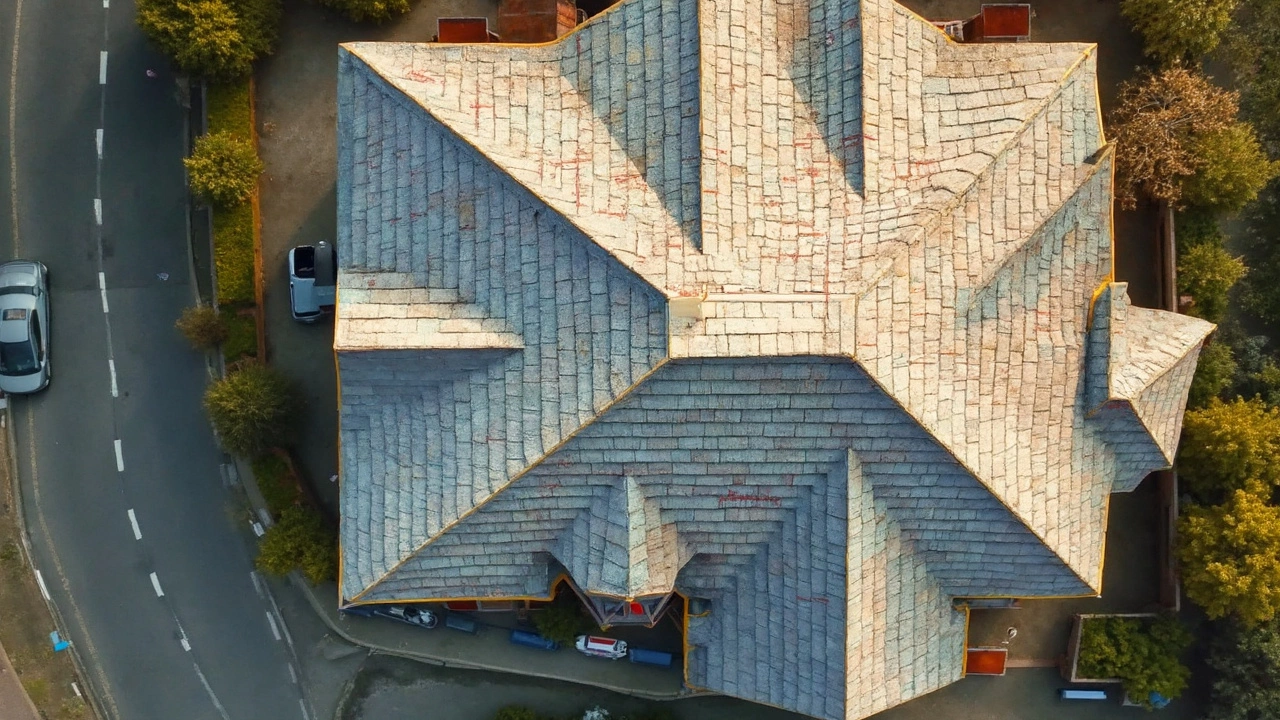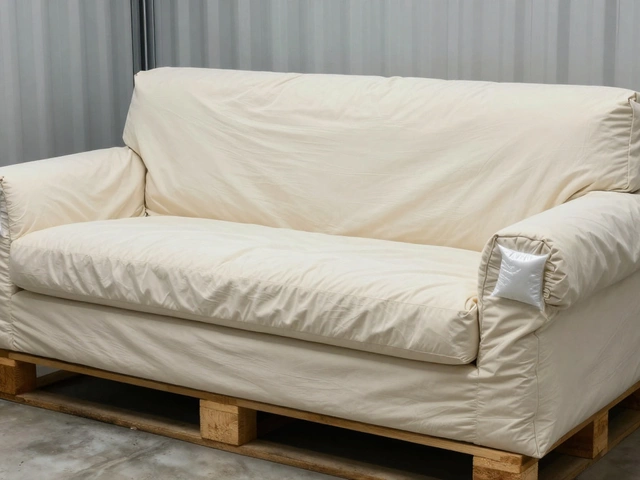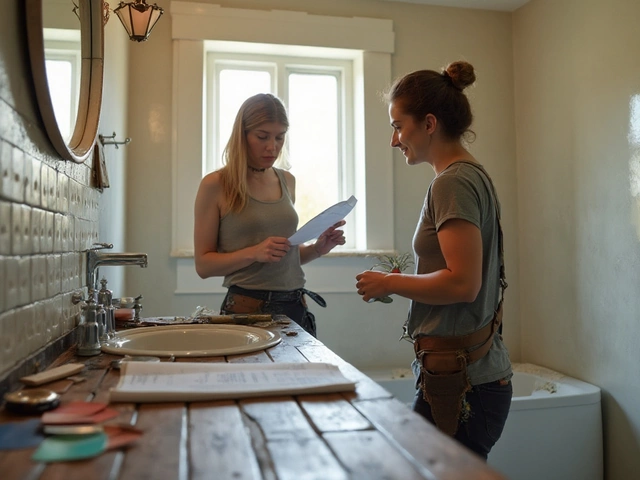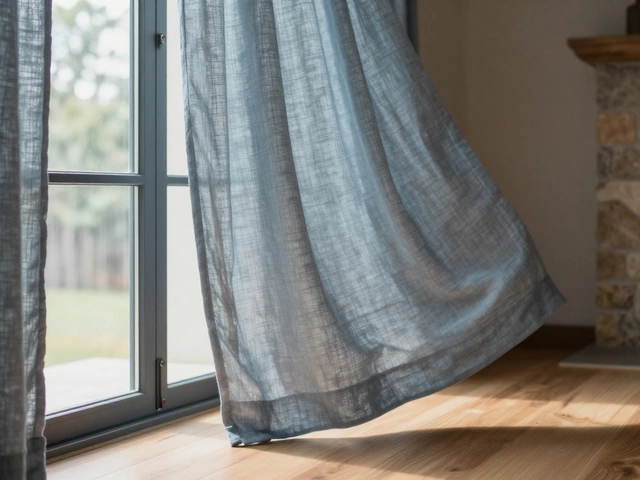Lots of folks think a 2000 sq ft house just needs 2000 square feet of roofing. If only it were that simple. Your actual roof area depends on way more than just your home's footprint. The slope (how steep your roof is) and all those little peaks, valleys, and overhangs will bump up your numbers—sometimes by a lot.
So before you grab your phone and start calling up roofing companies, you’ll want a quick way to estimate your real roofing needs. Once you know the total roof area, you can avoid nasty surprises like coming up short or blowing your budget on unnecessary extras. Nobody likes that extra last-minute trip to the hardware store.
- Figuring Out Your Roof Size
- Pitch Matters: Why Steep Roofs Need More Material
- Factoring in Waste and Overage
- Popular Roofing Materials and Coverage
- Ordering Like a Pro: Tips and Avoiding Mistakes
- Saving Money and Maximizing Your Investment
Figuring Out Your Roof Size
Don’t just rely on your house’s square footage for a roof estimate—it’s only part of the story. You’ve probably heard the phrase “roofing square” tossed around by pros. One roofing square covers 100 square feet, so you’ll see roof area calculation measured in these units. Think of them as bundles for your roofing material.
If your house is a simple rectangle with a flat roof, your math’s easy: length times width, and that’s your roof size. But most houses aren’t boxes. Roofs have overhangs, slopes, and sometimes extra features like dormers or skylights. Each of these adds more area to cover.
- Overhangs usually add about a foot all along the edges. That alone can boost your total roof size by several hundred square feet on a 2000 sq ft house.
- Sloped roofs always eat up more material than a flat one. A "steeper" slope means more surface area, which means more shingles or metal panels (we’ll get into exact math in the next section).
- Multiple peaks, gables, or cutouts? Each one increases the count, not by a tiny amount but a chunk. If you see a lot of angles when you look at your roof, your material needs will jump.
The easiest way for most people to get an accurate number is to check your original home plans if you have them, or climb the ladder (carefully!) with a tape measure. But not everyone loves heights, so most use a rough estimate: add 10-20% to your home’s footprint for a 'best guess'. If your 2000 sq ft house is pretty simple, you might need around 2,200 to 2,400 sq ft of roofing. More angles and overhangs? You could be closer to 2,500 sq ft or up.
Here’s a quick cheat sheet for what can affect your roof area calculation:
- Roof shape: Simple gable vs. hip or multi-level
- Pitch: Low slope or super steep
- Features: Chimneys, skylights, dormers
- Overhang size: How far the roof sticks out past the walls
Still not sure? Many roofing companies offer free measurements and estimates, sometimes with drone or satellite tech. That’s a good way to double-check your numbers before you order any roofing material.
| House Size (sq ft) | Simple Roof Estimate (sq ft) | Complex Roof Estimate (sq ft) |
|---|---|---|
| 2000 | 2,200 | 2,500+ |
| 2500 | 2,750 | 3,000+ |
Pitch Matters: Why Steep Roofs Need More Material
So here’s something a lot of people miss: the steeper your roof, the more roofing material you’re going to need. Why? Your house might look like a simple 2000 sq ft box from above, but if the roof slants up sharply, you’re stacking extra surface area on top. That means you can't just look at the size of the house and call it done. If the pitch is steep, you end up covering a much bigger area.
The math isn’t crazy, but it does trip folks up. A roof’s "pitch" is just the angle—think shallow for a ranch house, or steep for those classic A-frames and Victorians. Professionals use a pitch multiplier to estimate actual surface. Here’s a quick peek at what different slopes do to your overall area:
| Pitch | Multiplier |
|---|---|
| Low (4/12) | 1.06 |
| Standard (6/12) | 1.12 |
| Steep (9/12) | 1.25 |
| Very Steep (12/12) | 1.41 |
Let’s break it down with a 2000 sq ft house. For a standard 6/12 pitch, multiply 2000 x 1.12. Suddenly you’re looking at 2,240 square feet of actual roof to cover. Steeper roof? Multiply by 1.25, and now it’s 2,500. The difference stacks up—literally.
Why does this matter? If you order exactly 2,000 square feet of roofing material without factoring for slope, you’re definitely going to fall short. Always check your roof’s pitch before buying materials. If you’re not sure, grab a smartphone angle-measuring app or ask a roofing services pro for a quick look.
And here’s a tip: some materials (like shingles and tiles) are trickier to install on steeper roofs, which might mean extra labor, too. Planning for the right amount—plus a bit for waste—keeps your project on budget and stress-free.
Factoring in Waste and Overage
Here’s something almost everybody underestimates: roofing waste and overage. If you order the exact square footage your home measures, you’re setting yourself up to fall short. You have to remember—materials get trimmed, cut around skylights or vents, and you’ll hit odd angles and spots that chew through way more than you’d expect.
Experienced roofing material suppliers recommend adding about 10% extra for waste on basic roofs. More complicated roofs—ones with lots of valleys, dormers, or cutouts—should plan for up to 15% overage. Why? Shingles, metal panels, or tiles just don’t line up perfectly, and you can’t use every scrap piece.
| Roof Type | Recommended Overage |
|---|---|
| Simple (few angles/rectangular) | 10% |
| Complex (multi-level, lots of cuts) | 12-15% |
Here's how the math works for a 2000 sq ft house:
- If the total roof area (after factoring in slope) is 2,400 sq ft, add 10% (that’s 240 sq ft) for a pretty standard roof. You’d need about 2,640 sq ft of roofing material to play it safe.
- If your roof’s got arches, a bunch of valleys, or funky shapes, that extra can jump up another 100-120 sq ft easily. Don’t try to cut corners—roof leftovers usually come in handy for repairs later.
If you’re ordering your own materials, check how the product is packaged. Shingles, for example, are usually sold by the bundle. One bundle can cover about 33 sq ft (with a little wiggle room depending on type). Always round up, never down, when buying. Being short even one bundle is a headache you can avoid with a little padding in your order.
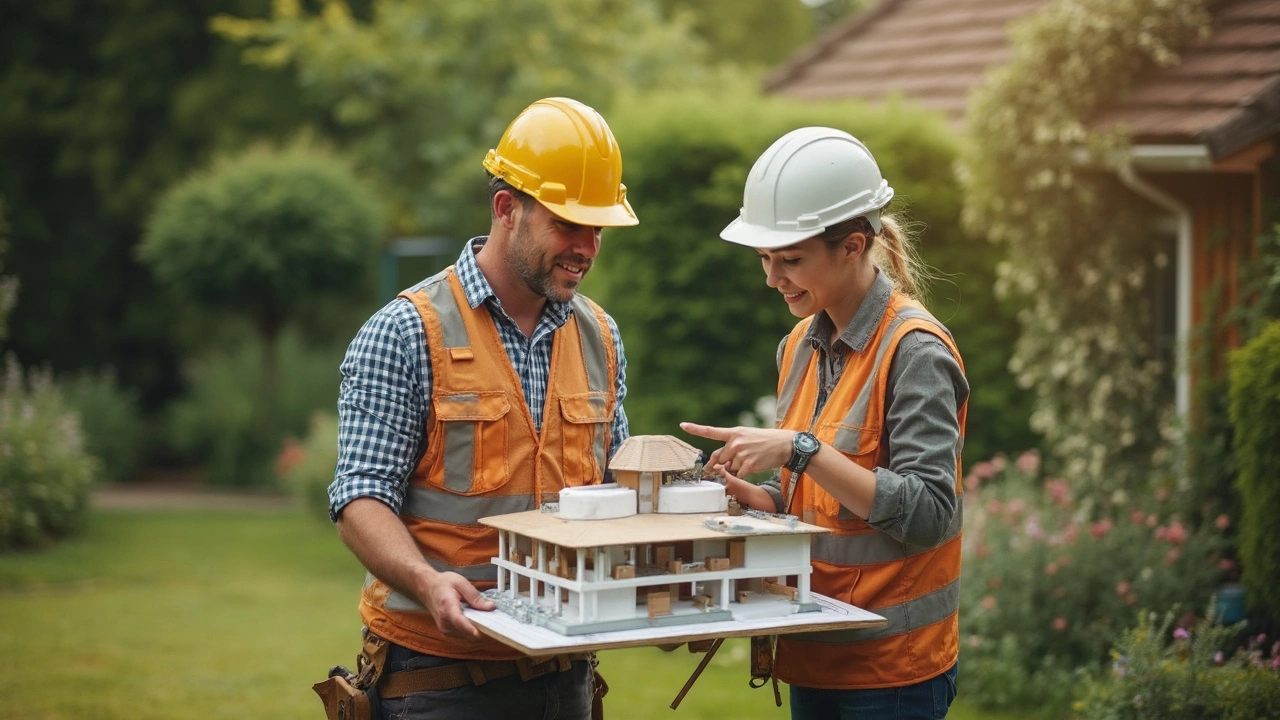
Popular Roofing Materials and Coverage
If you start looking into roofing material for a 2000 sq ft house, you'll see there’s no shortage of choices. Each type comes with its own unique perks—and coverage per unit. So, picking what fits your style and budget isn’t just about color, it’s also about how much material you’ll actually need to order.
Let’s break down the most common options:
- Asphalt Shingles: The go-to for most homeowners. They come in three-tab or architectural style. A bundle usually covers about 33.3 sq ft, and you’ll need three bundles for one roofing square (100 sq ft). For a 2000 sq ft roof, plan for at least 60 bundles, plus a few extra for mistakes and waste.
- Metal Roofing: These panels vary in width, but a standard corrugated panel (about 3 feet wide) covers roughly 36 sq ft per panel. They’re lightweight and shed water fast, no matter the roof pitch.
- Clay/Concrete Tiles: Sometimes people love tiles for the look and durability, especially if you don’t mind the extra weight. Coverage per tile depends on shape and overlap, but usually you’ll need around 90–100 tiles per 100 sq ft (one square). Tiles create more waste on tricky roof shapes.
- Wood Shakes or Shingles: These look sharp but take more time and material than asphalt. You’ll need about 4 bundles per 100 sq ft, thanks to overlaps. Also, allow extra for trimming, especially on complex rooflines.
- Slate: Tough and pricey. One square can take 300–400 pieces, depending on the size, so ordering is a job for a pro.
Not sure how that all shakes out? Here’s a rough table to help you eyeball your needs:
| Roofing Material | Coverage Per Bundle/Panel | Bundles/Panels for 2000 Sq Ft |
|---|---|---|
| Asphalt Shingle | 33.3 sq ft/bundle | ~60-65 bundles |
| Metal Panel | 36 sq ft/panel | ~56 panels |
| Clay Tile | 90–100 tiles/square | ~1800-2000 tiles |
| Wood Shake | 25 sq ft/bundle | ~80 bundles |
| Slate | 3-4 sq ft/tile | ~600-700 tiles |
Keep in mind, when you’re doing your roof area calculation, always allow a cushion of 10% (sometimes more for complicated roofs or fancier materials). If you’re not sure, roofers in your area probably have order calculators for different roofing material types, taking your roof pitch and shape into account. One wrong pickup, and you can end up short, which is the last thing you want halfway through the job.
Ordering Like a Pro: Tips and Avoiding Mistakes
Buying the right amount of material for a 2000 sq ft house can be trickier than it sounds. You want to save money, but you also don’t want to run out halfway through the job. Most pros tack on an extra 10% for waste—think cuts, mistakes, and all those angles that chew up shingles or metal panels.
Start by measuring (or double-checking) each segment of your roof. Just following the main footprint rarely works out, especially if you have gables, hips, or a porch roof tacked on. Get the exact square footage—add it all up, then multiply by your waste percentage (usually 10%, but boost it to 15% if your roof is really cut up or has lots of flashing).
- Always order a little extra—those factory batches don’t always match, and you’ll want spares for repairs down the road.
- Ask your supplier about material returns. Not every store will take them back, so don’t bank on that refund for three unopened bundles.
- If you’re using something heavy like asphalt shingles, ask about delivery. Lugging 60 bundles up a ladder is nobody’s idea of a good time.
When comparing roofing material choices, check the coverage per bundle or sheet. Not all brands are created equal—one bundle of shingles may only cover 33 square feet, while another stretches to 40. Metal roofing usually gets ordered by the linear foot, so you’ll need width and length for every panel.
| Material | Coverage Per Bundle/Sheet | Bundles/Sheets Needed (2000 sq ft plus 10% waste) |
|---|---|---|
| Asphalt Shingles | 33 sq ft per bundle | 67 bundles |
| Architectural Shingles | 30 sq ft per bundle | 74 bundles |
| Metal Roofing | Varies by panel size | Measure for linear feet |
Last thing—never skip double-checking your math. Roofing calculators are handy, but double-check your numbers with a tape measure if possible. Mistakes get expensive fast, especially when it comes to roof replacement materials. And when in doubt, ask your installer for a second look before pulling the trigger on your big order.
Saving Money and Maximizing Your Investment
Roofing isn’t cheap, but you’ve got more ways to save than you might think—especially when ordering materials for a 2000 sq ft house. If you just call up a supplier and order whatever the contractor says, you could be throwing money away. Here’s how to keep your wallet in check and still end up with a solid, good-looking roof:
- Shop Around: Prices for roofing materials jump all over the place depending on where you buy. Compare at least three suppliers before placing an order. You might save hundreds just by shopping local instead of heading straight for the big chains.
- Bulk Discounts: Tons of stores knock off a few bucks per square if you buy in larger quantities. For a roof replacement covering 2,000 square feet, you’re typically ordering about 22 to 25 roofing “squares.” Always ask about bulk rates.
- Choose Your Shingles Wisely: Cheaper isn’t always better. Low-end asphalt shingles might save you up front, but they could need replacing in 10 years tops. Architectural shingles often last twice as long and don’t cost that much more per square. You can even get longer warranties, which means less stress down the road.
- Avoid Over-Ordering: Calculate your roof area correctly, then add about 10% for waste—the pros use this number for a reason. If your roof is super simple, you might get away with a little less. Got lots of hips, valleys, or weird shapes? That 10% is your safety net. Buying way more than you need is just leaving money on the table.
- DIY What Makes Sense: Not all roofing jobs should be done yourself, but stuff like removing old shingles or cleaning up can save you on labor if you’ve got the time and basic tools. Check your contract—sometimes there’s money to be saved just by hauling away debris yourself.
Now, here’s something people miss: roofing warranties. Read the small print. Some manufacturers only honor warranties if you use their full system (underlayment, ventilation, etc). Skipping out to save a few bucks could cost you big if you ever need to make a claim.
For a frame of reference, here’s a quick snapshot of what you might pay for different materials per “square” (covers 100 sq ft):
| Material | Average Cost per Square (2025) | Typical Lifespan |
|---|---|---|
| 3-Tab Asphalt Shingles | $110 - $140 | 15-20 years |
| Architectural Shingles | $160 - $240 | 25-30 years |
| Metal Roofing | $300 - $550 | 40-70 years |
It might be tempting to go cheap now, but a slightly bigger payment up front often means more years between repairs, less hassle, and way more value in the long run. Bottom line? Plan ahead and make every dollar count. Your roof—and your wallet—will thank you.
